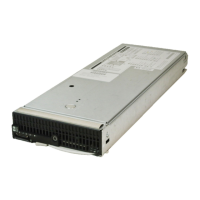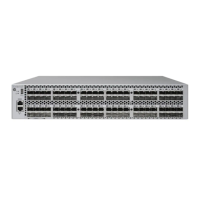This definition applies only to BACKUP. Other applications, such as FUP, default to
RETENTION=0, and the tape is considered "scratch" as soon as it is written.
FILEID tape-file-name
specifies the name of the tape file. The tape-file-namecan be as many as 17 characters
long. If names are over 17 characters, only the right-most 17 characters are used.
FILESECT volume-order
specifies the position of this tape volume in a multivolume file, which is being created at the
same time. FILESECT is meaningful only with files that require multiple volumes. The first section
of a file that is written always has a FILESECT value of 1. If the file requires a second tape
volume, the section of the file written to the second tape has a FILESECT value of 2. Sequentially
increasing values for FILESECT are given to each file section assigned to separate tape volumes.
Do not specify FILESECT for USE OUT. The tape process defaults FILESECT to a value of 1 and
adjusts the value as necessary.
FILESEQ file-order
specifies the position of this tape file in a multifile volume. Specify an integer in the range of
1 through 9999 to indicate the relative position of the file. The number is always 1 for single-file
organization, and it is always increasing sequentially for multiple files in a volume set.
GEN gen-number
indicates that this file is part of a generation group. Specify an integer in the range of 1 through
32767 to indicate the generation number. The default is 1.
LABELS { ANSI | IBM | OMITTED | BYPASS | BACKUP | IBMBACKUP }
specifies the processing mode to be used. OMITTED is the default.
ANSI—the tape labels conform to ANSI standard X3.27-1987. The system is to perform ANSI
standard label processing on the file (LP mode).
IBM—the tape labels conform to IBM-MVS XA release 1.2 standard. The system is to perform
IBM-MVS standard label processing on the file (LP mode).
OMITTED—there are no tape labels. The system does not do label processing except to check
that the tape is not a standard labeled tape (NL mode). If you specify LABELS OMITTED, you
must also include the DEVICE attribute.
BYPASS—the system does not perform label processing and ignores any tape label (BLP mode).
If you specify LABELS BYPASS, you must also include the DEVICE attribute. Incorrect use of
BYPASS can cause labeled tapes to be overwritten.
BACKUP—used for a BACKUP or RESTORE process.
IBMBACKUP—used for a BACKUP or RESTORE process.
Valid values are BACKUP or OMITTED for Backup and Restore 2.0.
LOGICAL { 1 | 2 }
identifies which copy of a volume set created from a parallel BACKUP or BACKCOPY run
contains a tape file from which you want to read data. When such tape volume sets are created,
one set is cataloged as logical copy 1 and the other set as logical copy 2. This attribute is
typically used for input, not output. The default is 1. If CATALOG is OFF, LOGICAL is ignored.
This option is normally used for USE IN DEFINEs only. The BACKUP and BACKCOPY utilities
manage the setting for USE OUT. BACKCOPY is a standard Backup Restore utility.
LOGICAL is ignored by Backup and Restore 2.0.
MOUNTMSG text
specifies an additional message to be displayed with the system mount message or drive-usage
request sent to the operator when this DEFINE is opened. Specify a quoted character string of
up to 80 characters. Include information such as length and urgency of the tape job. The
MEDIACOM MOUNTS command also shows the MOUNTMSG for each mount request it
displays.
OWNER owner-id
identifies an owner in the label. For owner-id specify any unique name or code. For ANSI
labeled tapes or BACKUP labeled tapes, the owner ID can be 1 through 14 characters long.
TAPE DEFINE Attributes 289

